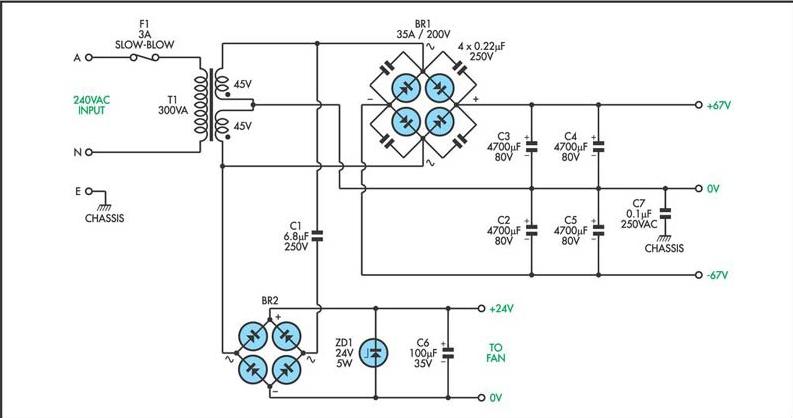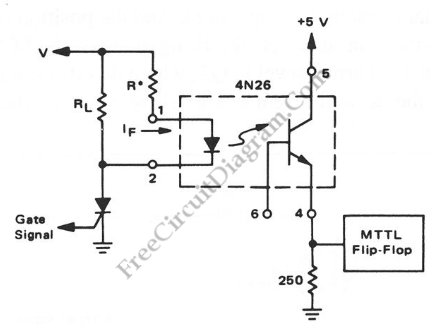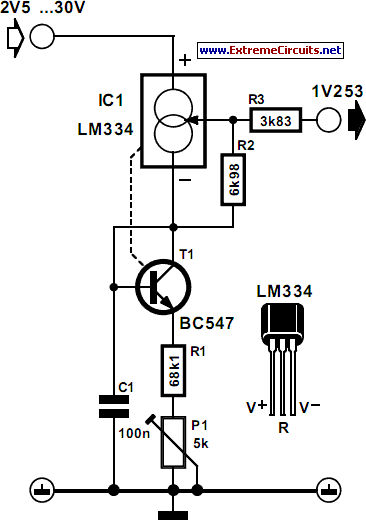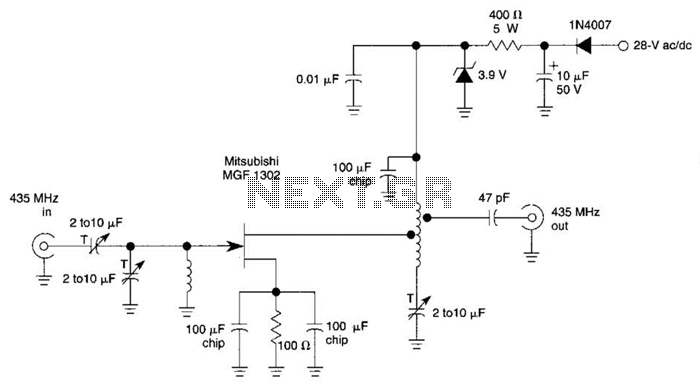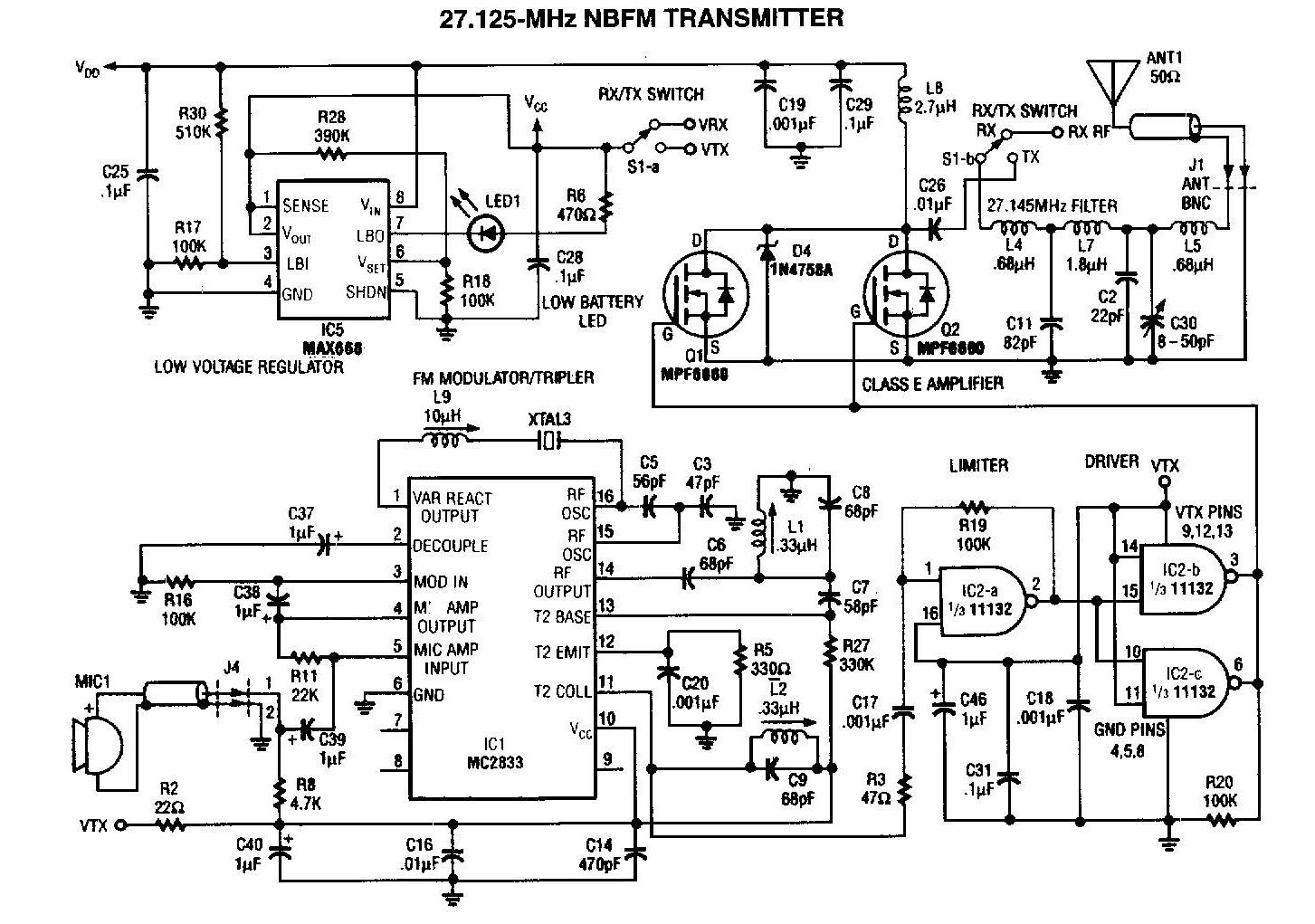
Steady flow of power transistor circuit
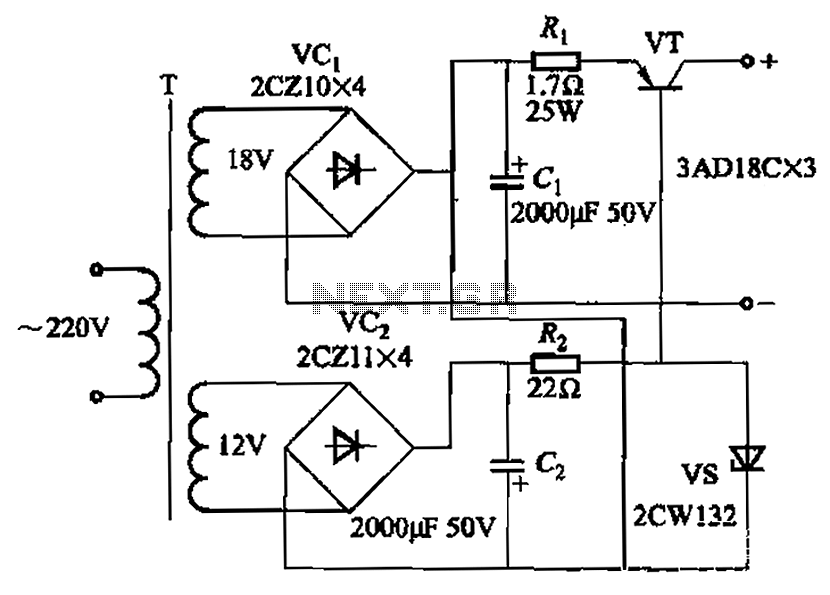
Characterized by a steady flow of power when the power supply voltage fluctuates or the load changes, this circuit maintains a constant load current. The output current of the circuit is illustrated in Figure 4A. When the load varies from 0 to 2n, the current changes by less than 10%.
This circuit exemplifies a power supply regulation system designed to ensure a stable output current despite variations in input voltage or load conditions. The primary function is to maintain a constant current output, which is crucial for applications requiring precise power delivery.
The operation of the circuit can be achieved through various methods, including the use of feedback control mechanisms, which continuously monitor the output current and adjust the input parameters accordingly. This feedback loop is essential for compensating for any fluctuations in the power supply or changes in the load, thereby ensuring that the output remains stable.
In the illustrated circuit, components such as operational amplifiers may be employed to compare the desired output current with the actual output. When discrepancies are detected, the circuit adjusts the control signal to modulate the power supply or the load, thereby minimizing any deviations from the set current level.
Additionally, the design may incorporate filtering capacitors to smooth out any transient responses and provide a more stable output. The use of inductors can also help in managing load changes, as they resist changes in current and can provide temporary energy storage during load variations.
The performance characteristics of the circuit indicate that when the load transitions from 0 to 2n, the output current remains relatively stable, with fluctuations contained within a 10% range. This level of performance is indicative of a well-designed regulation circuit, capable of handling real-world conditions effectively.
Overall, this circuit is particularly suitable for applications in sensitive electronic devices where maintaining a constant current is essential for optimal operation and reliability. Characterized by a steady flow of power when the power supply voltage fluctuations or load changes, to maintain a constant load current. The output current of the circuit shown in Figure 4A. When the load changes from 0 to 2n, current changes less than 10%.
This circuit exemplifies a power supply regulation system designed to ensure a stable output current despite variations in input voltage or load conditions. The primary function is to maintain a constant current output, which is crucial for applications requiring precise power delivery.
The operation of the circuit can be achieved through various methods, including the use of feedback control mechanisms, which continuously monitor the output current and adjust the input parameters accordingly. This feedback loop is essential for compensating for any fluctuations in the power supply or changes in the load, thereby ensuring that the output remains stable.
In the illustrated circuit, components such as operational amplifiers may be employed to compare the desired output current with the actual output. When discrepancies are detected, the circuit adjusts the control signal to modulate the power supply or the load, thereby minimizing any deviations from the set current level.
Additionally, the design may incorporate filtering capacitors to smooth out any transient responses and provide a more stable output. The use of inductors can also help in managing load changes, as they resist changes in current and can provide temporary energy storage during load variations.
The performance characteristics of the circuit indicate that when the load transitions from 0 to 2n, the output current remains relatively stable, with fluctuations contained within a 10% range. This level of performance is indicative of a well-designed regulation circuit, capable of handling real-world conditions effectively.
Overall, this circuit is particularly suitable for applications in sensitive electronic devices where maintaining a constant current is essential for optimal operation and reliability. Characterized by a steady flow of power when the power supply voltage fluctuations or load changes, to maintain a constant load current. The output current of the circuit shown in Figure 4A. When the load changes from 0 to 2n, current changes less than 10%.
